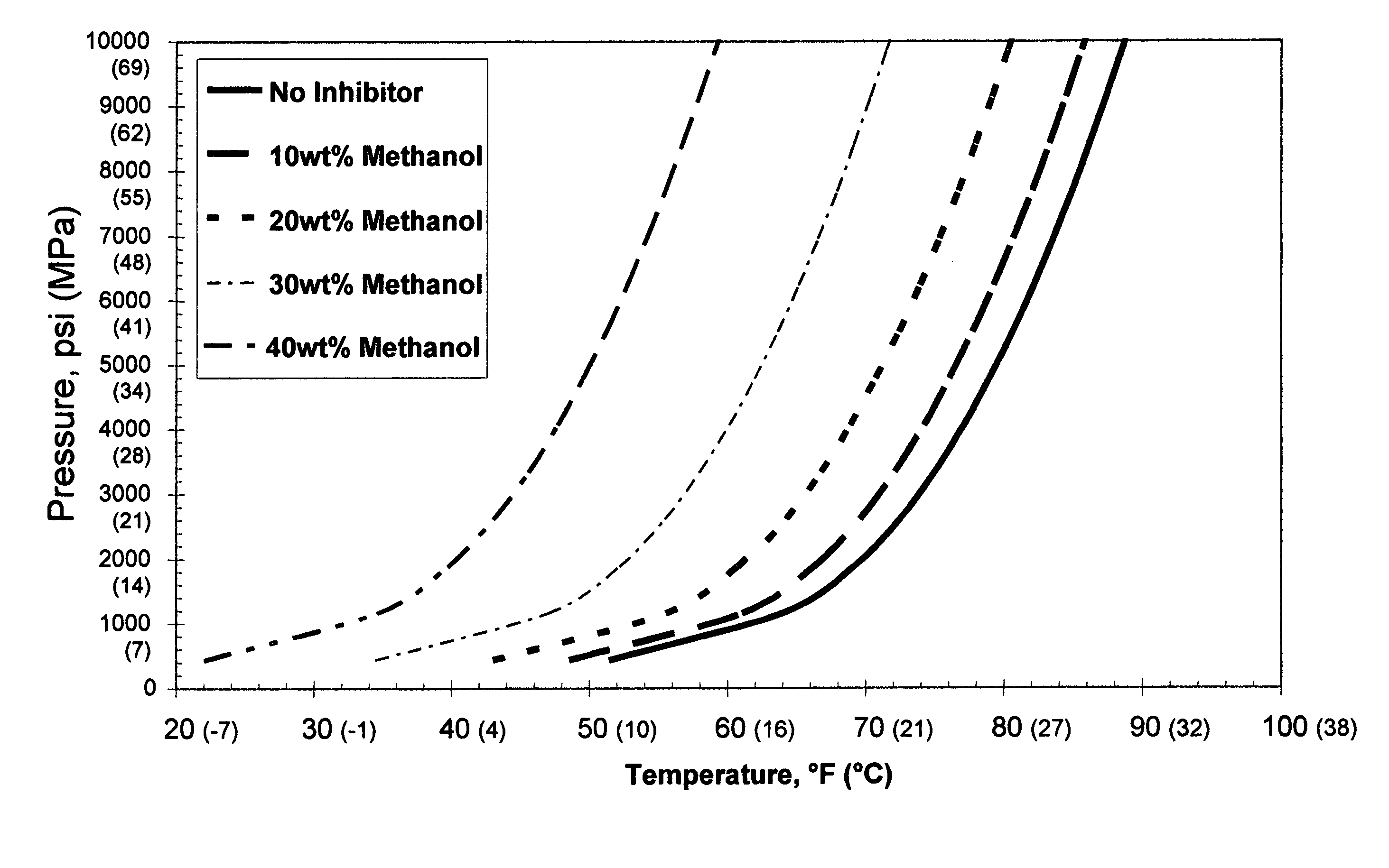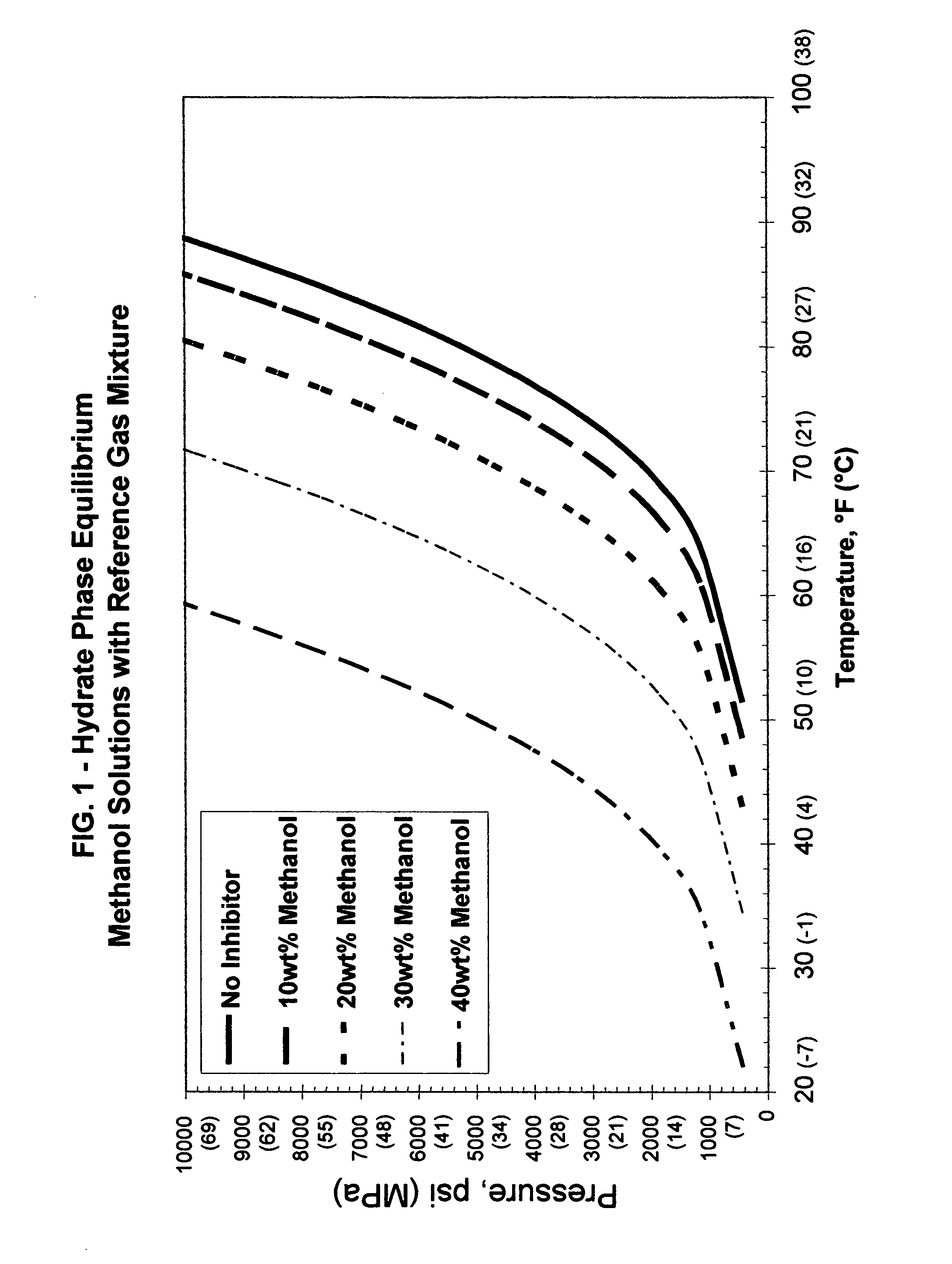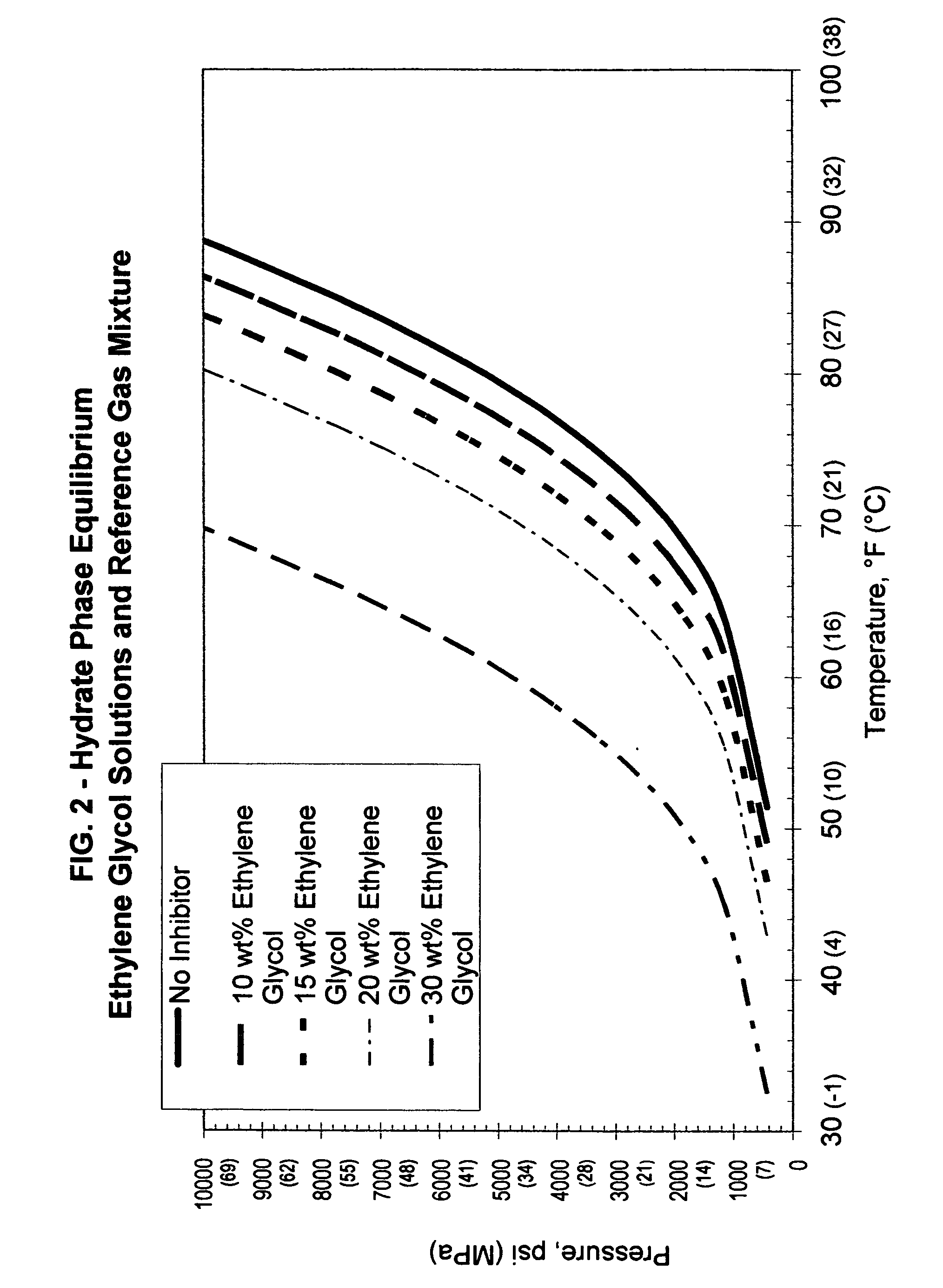Additives for hydrate inhibition in fluids gelled with viscoelastic surfactants
a technology of viscoelastic surfactants and additives, applied in the field of additives for hydrate inhibition in fluids gelled with viscoelastic surfactants, can solve the problems of fluid deformation, complex development of suitable fracturing fluids, and inability to close or heal completely cracks or fractures, etc., and achieve the effect of increasing viscosity
- Summary
- Abstract
- Description
- Claims
- Application Information
AI Technical Summary
Benefits of technology
Problems solved by technology
Method used
Image
Examples
examples 1-5
[0052] A synthetic multi-component gas mixture that has become a reference or baseline composition gas for gas hydrate inhibitor testing was used in the Examples. The reference gas mixture has the composition shown in Table I.
TABLE IComposition of Reference Gas MixtureCompoundMole %Methane87.200Nitrogen0.400Ethane7.580Propane3.090Isobutane0.496N-Butane0.792Isopentane0.203N-Pentane0.200Ethylene (as impurity)167 ppm
[0053] An industry known gas hydrate prediction computer modeling software was used for generating the calculated or approximate data points for the thermo-dynamic inhibitor-gas hydrate equilibrium curves. This program was used to model hydrate phase equilibrium curves for reference gas mixture with no additives and differing proportions of varying additives as noted in the Table II chart:
TABLE IIExample / Figure / Additive ChartExampleFIG.Additive11Methanol22Ethylene glycol33Sodium chloride44Calcium chloride56Potassium formate
[0054] It may be seen that in each case, the hy...
examples 6-8
[0055] Examples 6, 7 and 8 show in FIGS. 6, 7 and 8, respectively, how an increase in CaCl2 salt additive concentration enhances VES fluid viscosity. The 100° F. (83° C.) and 150° F. (66° C.) data is for a 4% VES-gelled aqueous fluid (FIGS. 6 and 7), and the 175° F. (79° C.) data is for a 6% VES-gelled fluid. A proportion of 10 ppg CaCl2 (1.2 kg / liter) is compared with a proportion of 9 ppg CaCl2 (1.1 kg / liter). Although the increase seen in FIG. 6 (Example 6) is relatively small, the increase in viscosity is greater for FIGS. 7 and 8 (Examples 7 and 8, respectively). It should be noted that the y-axis viscosity scales for these three FIGS. is not the same, but increases with each successive Figure. This data demonstrates an increased viscosity using the additives of the invention.
PUM
| Property | Measurement | Unit |
|---|---|---|
| Fraction | aaaaa | aaaaa |
| Fraction | aaaaa | aaaaa |
| Fraction | aaaaa | aaaaa |
Abstract
Description
Claims
Application Information
 Login to View More
Login to View More - R&D
- Intellectual Property
- Life Sciences
- Materials
- Tech Scout
- Unparalleled Data Quality
- Higher Quality Content
- 60% Fewer Hallucinations
Browse by: Latest US Patents, China's latest patents, Technical Efficacy Thesaurus, Application Domain, Technology Topic, Popular Technical Reports.
© 2025 PatSnap. All rights reserved.Legal|Privacy policy|Modern Slavery Act Transparency Statement|Sitemap|About US| Contact US: help@patsnap.com



